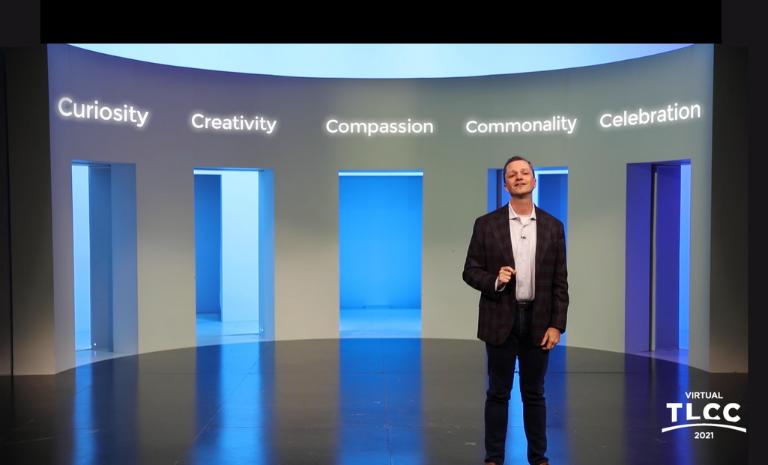Arts and Culture
Accessibility
Fundraising
Article
Insights & Innovation
a5494161-02d6-4d9f-834c-35fea4e8f1cd
45 min
https://edge.sitecorecloud.io/tessituraneab9a-tessiturane5642-staging-5396/media/Images/Discover-Images/Thought-Leadership/abstract-pexels-blue-light-circles-768x465.jpg?h=465&iar=0&w=768
Increasing philanthropic support with an authentic approach to DEAI
Expanding the radius
11/16/2021
45 min
Sometimes you find yourself in a unique and amazing position.
It could be starting a new job or meeting remarkable people. Or, as I learned recently, it could be moderating an insightful panel on diversity, equity, inclusion and access in arts and culture fundraising.
This past June, I joined the staff of Tessitura, excited to champion its mission of supporting and elevating arts and culture through technology. Just a few weeks later, I had the opportunity to moderate a panel discussion for the Tessitura Learning & Community Conference. This year, our conference went virtual, bringing together more than 4,000 arts and culture professionals from around the world. For the first time, we held sessions centering the topics of diversity, equity, access and inclusion.
Donors frequently seek transparency, accountability and tangible commitments.
The panel I moderated featured a lively dialogue. We reviewed the value of social impact, examined who was missing at the table and explored the lack of a holistic approach in arts and culture fundraising. Donors frequently seek transparency, accountability and tangible commitments when addressing diversity, inclusion and anti-racism in arts philanthropy. This panel answered those requests with a candid, enlightened response.
Participating were Victoria Murray Baatin from The Kennedy Center, Brandon Hansen from Baltimore Center Stage and Pamela Butler from Jazz at Lincoln Center. All agreed that diversity is critical not only to expanding the radius of arts philanthropy engagement but also to making our cultural organizations sustainable and viable. It was clear that arts organizations need to be more intentional about inclusion: Audiences are changing, donors are evolving and patrons of all backgrounds are participating. The biggest question: Are these diverse voices represented at the table within our organizations?
Several key points resonated with me:
- Keep the idea of belonging as an endgame to diversity work
- Social impact is more valuable than community engagement
- Make every donor, regardless of giving level, feel important
- Be authentic in your approach to diversity
- Work with culture leaders toward outcomes that are not art-based
- Lean into uncomfortable conversations about diversity; that’s how we evolve
Let’s explore these in more depth.
Brandon suggested that organizations must understand who does not feel welcome or have ownership in the work because they have been left out of the conversation. He challenged everyone to ask themselves who they have not asked for money or invited to the table — and why not. Brandon raised the idea of “decolonizing fundraising,” pulled from the acclaimed book Decolonizing Wealth by Edgar Villanueva. How does the notion of belonging heighten the value of diversity and inclusion? How can we do this work if we are focused solely on high-dollar white donors? The myth that non-white patrons cannot or do not contribute may still need to be dispelled.
Victoria from The Kennedy Center shared the importance of leveraging artists and other culture leaders for outcomes that are not necessarily artistic products: to engage them as internal and external stakeholders, including enthusiasts and producers of the art. This approach builds community and audience engagement, which in turn creates accountability, ensuring that cultural organizations are honoring their commitments to diversity and inclusion.
“Then you've also got to build the culture inside of it, build the spirit inside of it.”
Working for Jazz at Lincoln Center gave Pamela entrée to an organization that centered diversity long before the word became a table topic. “Diversity is embedded in the DNA of what we do every day,” she said. However, further exploration raised an important question: “How are we defining diversity?” We often consider diversity from a racial or ethnic perspective, but there are many other facets. When Jazz at Lincoln Center reflected on its board of directors, for example, the lack of women leaders became evident. In an environment in which racial and ethnic diversity is top of mind, gender, accessibility and age must join the conversation.
Each of the panelists offered incredible perspective and rich insights, and I was grateful to be part of the conversation. Watch the recording above.
This panel was presented at the virtual 2021 Tessitura Learning & Community Conference.
Topics
Arts & Culture
/Accessibility
/Fundraising

Why Arts & Culture is Essential Today
Arts & Culture
Healing the world requires five human traits: arts & culture delivers them all.

A contactless customer journey with a personal touch
Arts & Culture / Business Strategy / COVID-19 / Technology / Ticketing & Admissions
How Georgia Aquarium creates a visitor-focused experience